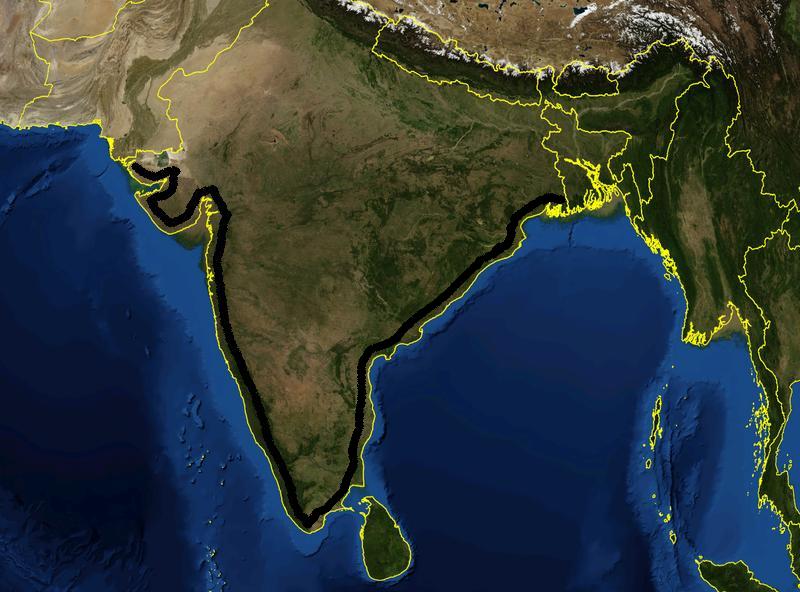
Pritha Mandal
India’s Fight With Climate Change
Most Read Stories Today
-
Water Scarcity and Artificial Rainfall: The Positive and The Negative Effects of Cloud Seeding, including Health Hazards and Climate Implications.
-
Renewable Energy in Rural Areas: Challenges, Opportunities, and Successful Rural Projects
-
Pakistan's Agriculture at Risk Due to Climate Variability
-
South Africa's Recent Floods: Is Climate Change to Blame?
-
South Korea's floods: root causes and prevention strategies.
-
South Africa: Cape Town, A City Under Fire
-
The Human Cost of Climate Disasters
-
Our Oceans, Our Future: The South African Dilemma of Overfishing
-
Degenerative Impact of Hydrocarbons On The Environment.
-
Sustainable Urban Planning - Copenhagen and the Path to Climate Resilience
In 2022, the G20 country of India made certain significant strides in the fight against climate change.
At the 2022 year-end review published by the Government of India’s Ministry of Environment, Forest and Climate Change, several climate change initiatives launched by the country were highlighted. These included the submission of India’s long-term low emissions development strategy (LT-LEDS) at the 27th session of Conference of Parties (COP-27) to the United Nations Framework Convention on Climate Change (UNFCCC), the launch of the Lifestyle for Environment Mission (LiFE) by the Prime Minister of India, and advancements in the existing National Clean Air Program (NCAP) and Mission Circular Economy.
These various initiatives are aimed at addressing the distinct avenues of climate change. In the LT-LEDS submitted to the UNFCCC, India underscored its national focus on the rational use of national resources, increased use of biofuels, sustainable and climate resilient urban development, and continued use of ‘Atma Nirbhar Bharat’ or ‘Make in India’ perspective in Indian industries.
While the LT-LEDS was aimed at national-level strategies, Mission LiFE focused on individual contributions by Indian corporations and citizens. The objective of Mission LiFE was to collectively work to build a sustainable society by focusing on demand, supply, and policy. Societal demand would be managed by encouraging individuals to practice simple but effective eco-friendly actions in their daily lives, supply would be made more efficient by facilitating markets and industries to swiftly respond to changing demands, and policy would be influenced at the industrial as well as governmental levels to support sustainable production and consumption.
The Mission Circular Economy complimented Mission LiFE by promoting the recycling of ten waste categories: Lithium-ion batteries, scrap metal, E-waste, toxic and hazardous industrial waste, end-of-life vehicles, tyre and rubber, solar panels, used oil, gypsum, and municipal solid waste.
Finally, the NCAP was promoted towards meeting city-wise yearly targets for air quality improvement. India’s contribution towards tackling climate change in 2022 was reflected by its relative global performance. As per the Climate Change Performance Index (CCPI) published by the environmental NGO Germanwatch in cooperation with the New Climate Institute and Climate Action Network International, India rose two spots in 2022 to rank 8th among 60 countries and the European Union.
This CCPI ranking placed India as the only G20 country in the top 10 positions. In the CCPI report, India earned high ratings in the Greenhouse Gas Emissions and Energy Use categories, and the country was noted to be on track to meet its 2030 emissions targets. While India has made significant efforts and achieved decent results in its fight against climate change in 2022, there remains a long road ahead.
Specifically, medium 2022 CCPI ratings in the categories of Climate Policy and Renewable Energy illustrate the need for focusing on these aspects. In this regard, India is well on its way by including renewables targets in its latest Nationally Determined Contributions (NDCs) and announcing a net-zero target for 2070.
As presented by CCPI experts, to be compatible with a below-2° C scenario, all India needs are concrete action plans and efficient roadmaps for achieving its targets.
References:
https://pib.gov.in/PressReleasePage.aspx?PRID=1886051
https://www.pib.gov.in/PressReleasePage.aspx?PRID=1878023
https://pib.gov.in/PressReleaseIframePage.aspx?PRID=1847812
India – Climate Performance Ranking 2023 | Climate Change Performance Index (ccpi.org) https://pib.gov.in/PressReleasePage.aspx?PRID=1875816 https://pib.gov.in/PressReleasePage.aspx?PRID=1869466

Terms & Conditions
Subscribe
Report
My comments